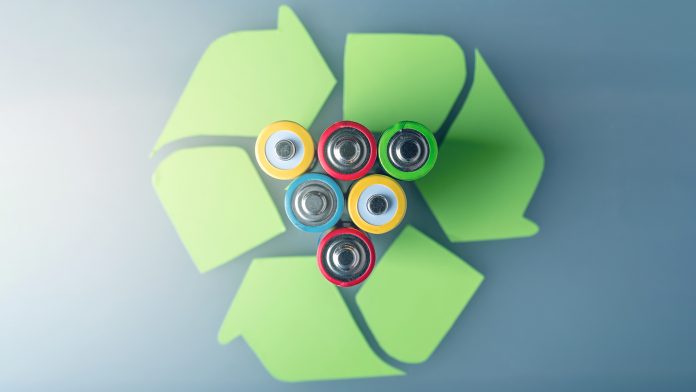An IDTechEx report has highlighted the urgent need to optimise lithium battery recycling in Europe to ease critical raw material supply chain demands.
The comprehensive market report titled “Li-ion Battery Recycling Market 2023-2043”, estimates that the total demand for lithium batteries surged to over 750 GWh in 2023 and is projected to reach nearly 10 TWh by 2043.
However, potential supply constraints on critical raw materials for lithium batteries are looming, necessitating a closer look at the evolving landscape of lithium battery recycling and the European Union’s response.
EU Critical Raw Materials Act overview
On November 13, 2023, the EU Parliament reached a consensus on the Critical Raw Materials Act (CRMA), a milestone in securing vital resources for the region.
However, the formal approval of these regulations by the Council is pending before publication in the Official Journal of the EU.
The CRMA aims to safeguard critical raw materials within the EU, addressing concerns about the widening gap between global supply and demand.
This legislation holds significance not only for the lithium battery market but also for critical sectors such as security, defence, agriculture, health, and construction.
The document outlining the CRMA, titled ‘Framework for ensuring a secure and sustainable supply of critical raw materials,’ identifies 34 critical raw materials and 17 strategic raw materials.
Crucially, materials central to the lithium battery market, such as lithium, manganese, natural graphite, nickel, cobalt, and copper, feature prominently.
The EU Parliament established ambitious objectives to be achieved by 2030, emphasising the reduction of dependence on third countries.
Objectives to secure supply chains
The EU Parliament outlined four key objectives to be achieved by 2030:
- Limiting each strategic raw material’s supply to the EU from a single third country to no more than 65%;
- Ensuring at least 10% of the EU’s annual consumption of strategic raw materials originates from EU extraction;
- Processing at least 40% of the EU’s annual consumption of strategic raw materials within the EU; and
- Achieving a Union recycling capacity that can produce at least +10% volume based on the 2020-2022 baseline for each strategic raw material.
However, clarity is needed in the terminology used, especially regarding whether collected batteries must be fully recycled or processed.
EU lithium battery recycling targets
In August 2023, the EU Battery Regulation came into effect, setting collection rate and lithium battery recycling efficiency targets.
By 2026, the lithium battery recycling efficiency target is 65%, rising to 70% by 2031, surpassing the 45% recycling target set by the CRMA for 2030.
Collection rate targets for light means of transport and portable batteries are also higher than the CRMA target. Meeting these targets will contribute to the EU’s broader goal of collecting, sorting, and processing 45% of each strategic raw material.
Optimising lithium battery circularity
The EU agreement acknowledges low recycling and re-use rates for most critical raw materials, citing a lack of consideration for recyclability during product design as a key factor.
This highlights the need for improved EV battery design, focusing on simpler and faster disassembly procedures. IDTechEx’s market report “Second-life Electric Vehicle Batteries 2023-2033” suggests that adopting designs such as cell-to-pack could enhance recyclability.
Manufacturers and OEMs may need to shift their focus from performance and safety to considering end-of-life processing in their battery designs. Potential benefits or penalties may incentivise the industry to adopt designs that facilitate improved circularity.
The road ahead for the EU’s critical and strategic raw materials
The CRMA is crucial for the EU to secure its critical and strategic raw materials and reduce dependence on third countries.
The 2030 targets are ambitious, but the Council’s formal approval is pending. While the EU Battery Regulation mandates higher targets for lithium battery recycling, other industries using strategic raw materials must also align their processes with these goals.
Stakeholders across the value chain, including manufacturers, OEMs, and recyclers, will play key roles in achieving these targets in the EU.
As the demand for lithium batteries continues to surge, the importance of recycling and securing a stable supply of raw materials becomes paramount.
The industry’s ability to meet these targets will determine its sustainability and resilience in the face of evolving global dynamics.








